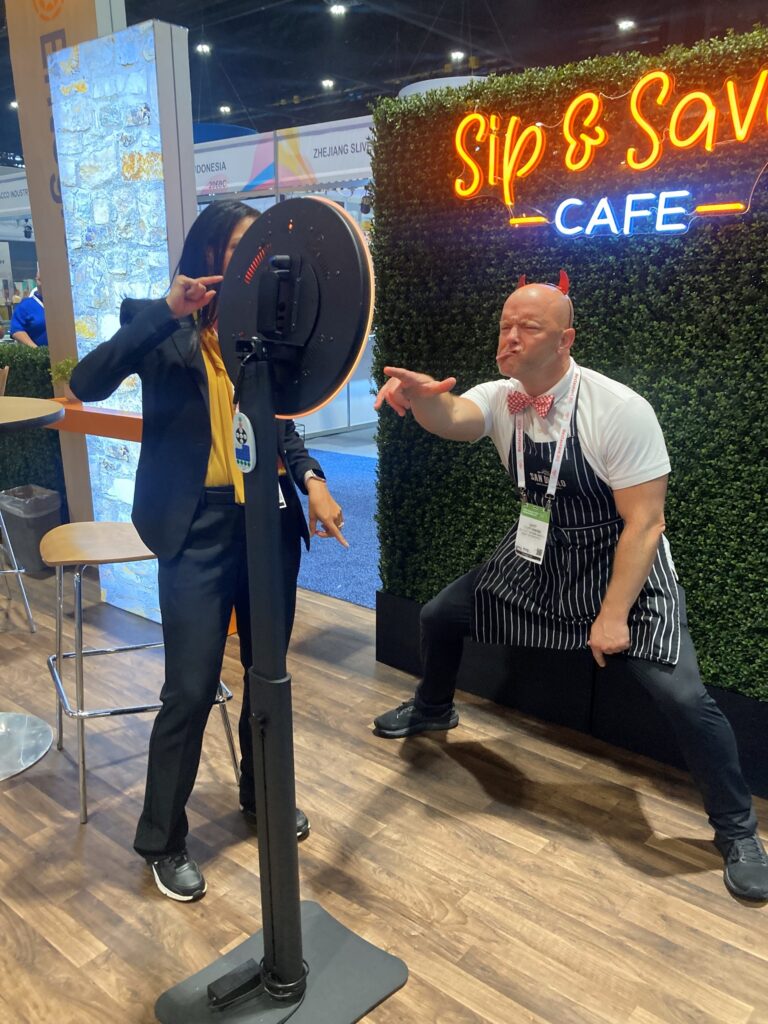Introduction
Trade shows are one of the most powerful ways to put your brand in front of the right people. They bring together decision-makers, buyers, and influencers, all under one roof, all eager to discover what’s new. Since the pandemic the trade show industry has seen impressive growth, with the U.S. market surpassing pre-pandemic revenue levels in 2024. This rebound is a testament to the continued value of in-person interaction, coupled with the integration of new technology and a shift toward hybrid events. But let’s be honest: without the right plan, trade shows can also feel like organized chaos.
That’s where planning comes in. At TPG Trade Show & Event Marketing, we’ve seen the difference between exhibitors who just “show up” and those who walk away with stacks of qualified leads and measurable ROI. The secret? A clear, strategic, step-by-step process coupled with a robust marketing campaign.
This guide will walk you through everything you need to prepare for a successful trade show: why planning matters, how to craft a winning strategy, which tools simplify the process, and – because we’re practical – a complete checklist you can actually use.
Why Trade Show Planning Matters
Picture this: You arrive at a trade show without a plan. Your booth is up, but the staff is unprepared, the signage doesn’t match your brand, (or my pet peeve – the signage is wrinkly) and half the promotional giveaways didn’t make it there in time. Attendees walk past, competitors shine brighter, and by the end of the event you’ve collected a handful of business cards with no qualifying info. Not great.
Now, contrast that with a strategic plan. Your booth is designed for impact, your team is trained to start meaningful conversations, your pre-show campaign has booked meetings in advance, you have a clear lead strategy, and you’ve set goals and metrics to measure success. By the end of the show, you have a database of qualified leads, appointments lined up, and the data to prove ROI. That’s the difference strategy makes.
Trade show planning isn’t about checking boxes – it’s about positioning your brand to win before, during, and after the event.
Step-by-Step Strategy for Trade Show Success
Step 1: Define Your Goals, Budget & Success Metrics
If you don’t know what success looks like, how will you recognize it when it happens? Start by asking:
- Do we want to generate leads? How many?
- Do we want to build awareness for a new product? Do we have existing tools to support this or will we need to create them?
- Do we want to strengthen relationships with existing clients? What would that look like and how can we measure impact?
Once you’ve set your goals, build a budget that covers booth design, logistics, promotions, travel, and follow-up. And don’t forget to define key performance indicators (KPIs): number of qualified leads, meetings booked, or deals influenced.
Pro tip: Your budget isn’t just a financial tool – it’s a prioritization tool. Knowing where your dollars make the most impact helps you say “yes” to what matters and “not this time” to what doesn’t. The same holds true for your goals and objectives. If the spend does not lead to goal achievement, it is not worth it.
Step 2: Generate Pre-Show Buzz
Think of the trade show like a concert. Would you ever launch a concert without promoting it? Exactly. The same principle applies here. Don’t wait until the event starts to get noticed.
Build buzz by:
- Sending personalized email invitations to key prospects
- Sharing behind-the-scenes booth previews on LinkedIn and Instagram
- Creating a landing page with incentives for scheduling meetings
- Offering exclusive giveaways or “sneak peek” demos to early visitors
Your goal isn’t just to increase traffic – it’s to ensure the right people already know who you are before they hit the show floor.
Step 3: Design a Booth that Works Hard for You
Your booth is more than real estate – it’s your brand’s stage. At TPG, we often tell clients: “Your booth is a 3D testament to your brand; it should tell your story.”
That means:
- Visual impact: Bold graphics, clear messaging, and design that matches your brand identity.
- Interactive elements: Live demos, digital displays, AR/VR experiences, or even gamification to keep visitors engaged.
- Comfort zones: Spaces for conversations, whether it’s a counter for quick chats or a lounge area for deeper discussions.
- Lead capture tools: Stop writing names on business cards. Scan badges or use tablets that sync directly into your CRM.
Fun fact: Attendees spend an average of 3–5 seconds deciding whether to approach your booth. Make those seconds count.
Step 4: Drive Engagement During the Event
This is where all your planning comes together. Did you plan out your attendee journey? What path would you like them to take and what do you want them to walk away with? Equip your team with talking points, product knowledge, and lead-qualifying questions. Keep the energy high, but authentic. Nobody likes a “sales-y” vibe. Focus on value, not pressure.
Engagement strategies include:
- Hosting live demos at set times to draw a crowd
- Offering quick contests or gamified experiences
- Creating a VIP experience for your top prospects
- Rotating staff responsibilities to avoid burnout
End each day with a quick debrief: What worked? What didn’t? This real-time adjustment is often the difference between a good show and a great one.
Step 5: Follow Up & Measure ROI
The trade show isn’t over when the lights go down. In fact, the real work starts the minute you get back.
Within 24–48 hours:
- Import all leads into your CRM
- Send personalized thank-you emails
- Assign hot leads directly to sales reps
Over the next few weeks:
- Launch nurture campaigns for colder leads
- Track which prospects convert into sales
- Hold a team debrief to discuss lessons learned
Your goal: measure ROI not just in leads, but in revenue generated, opportunities created, and pipeline growth.
Why Time Is Money in Trade Show Planning
Let’s be blunt: trade shows aren’t cheap. Booth rentals, design, travel, staffing, shipping, promotions – it adds up quickly. Every wasted hour is wasted money.
Poor planning often leads to:
- Missing early bird deadlines and paying a premium for show services
- Paying more for giveaways and supplies than needed
- Last-minute shipping costs (which are far higher than standard freight)
- Staff overtime for booth setup or missed training
- Lost leads because your capture process wasn’t in place
- Missed opportunities to book meetings before competitors did
On the flip side, strategic time management saves money and maximizes ROI. By planning six months to a year in advance, you can:
- Secure better booth locations
- Lock in lower hotel and travel rates
- Purchase services and giveaways at their lowest costs
- Ensure your booth is designed, shipped, and set up on schedule
- Give your team the training they need to shine
Top tip: Think of trade show planning like compound interest – the earlier you invest in preparation, the bigger the payoff when the show begins.
Tools to Simplify Trade Show Planning
Trade shows have a lot of moving parts but luckily, technology can help.
- Event Management Platforms (e.g., Bizzabo, Cvent): These are particularly important for show organizers to handle registrations, exhibitor sales, and analytics in one place.
- Lead Capture Solutions (e.g., Captello, iCapture): Eliminate manual data entry and ensure no prospect gets lost.
- Sales Enablement Tools (e.g., Hubspot, Salesforce, Showpad): Give your reps the right content for each conversation.
- Analytics & ROI Dashboards: Connect your CRM and marketing automation to prove results.
The right tools make life easier by allowing you to focus on what matters: engaging attendees and closing deals.
Mastering the Art of Trade Show Planning
Trade shows aren’t easy, but they don’t have to be overwhelming. With a clear strategy, the right tools, and a detailed checklist, you can transform your next event into a pipeline-building, brand-elevating success story.
At TPG Trade Show & Event Marketing, we’ve built thousands of exhibits for companies big and small. One thing we know for sure: success doesn’t happen by chance – it happens by design.
So whether this is your first trade show or your hundredth, remember: plan strategically, execute with energy, and follow up with precision. Do that, and you won’t just attend a trade show, you’ll own it.
Ready to take your trade show planning to the next level? Explore TPG’s Exhibit Design Search today and find the perfect display to make your brand unforgettable.
The Complete Trade Show Planning Checklist
Here’s the full TPG checklist, designed to guide you from early planning to post-event ROI measurement.
Pre-Event Planning (6–12 Months Out)
☐ Define goals, KPIs, and budget
☐ Select the right trade shows for your target audience
☐ Secure booth space and review floor plan (This really needs to be done 12 months + in advance)
☐ Develop creative campaign and strategy
☐ Choose your exhibit design via TPG Exhibit Design Search
☐ Place orders for show services and transportation
☐ Create booth graphics, signage, and brand materials
Pre-Event Planning (6-1 Month Out)
☐ Order giveaways and promotional collateral (4 months – especially if coming from overseas)
☐ Launch pre-show marketing campaigns
☐ Create Bills of Lading and put together show book for I&D team
☐ Train staff (including professional brand ambassadors and presenters) on key messaging, demos, and lead capture process
☐ Finalize travel, lodging, and logistics and send info sheets to your team conveying show details and schedules.
Event Week / Onsite Execution
☐ Ship booth materials and confirm delivery
☐ Assemble booth and test technology (AV, lead capture devices)
☐ Hold a staff huddle before doors open to review daily goals
☐ Capture leads in real time (no lost business cards!)
☐ Engage attendees with demos, presentations, and experiences
☐ Replenish materials and giveaways daily
☐ Debrief with staff at end of each day
Post-Event Follow-Up (Within 1–2 Weeks)
☐ Break down booth and manage return shipping
☐ Import leads into CRM and assign follow-ups
☐ Send thank-you emails within 48 hours
☐ Launch nurture campaigns for colder leads
☐ Analyze event data: leads, conversions, revenue impact
☐ Hold a team debrief for lessons learned
☐ Share event highlights on website and social channels
☐ Update trade show playbook for future improvements
Trade show success isn’t elusive – it’s engineered. With a clear strategy from concept to execution, your exhibit can evolve into a dynamic, unforgettable experience – one that drives measurable results, fosters meaningful connections, and fuels long-term growth.
TPG now offers Exhibit Solutions including exhibit properties and promotional gifts and swag! Together, let’s make your brand unmissable. Take a look!



